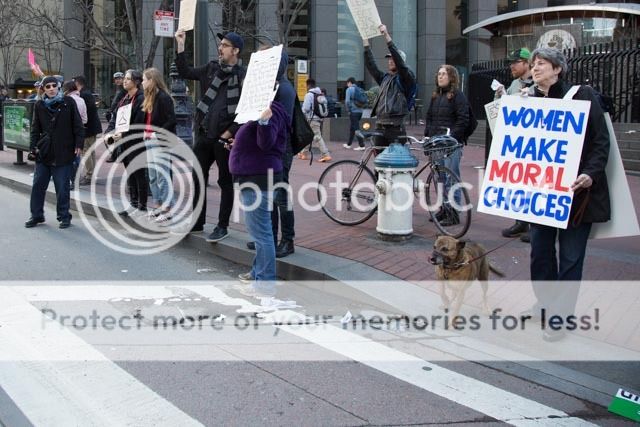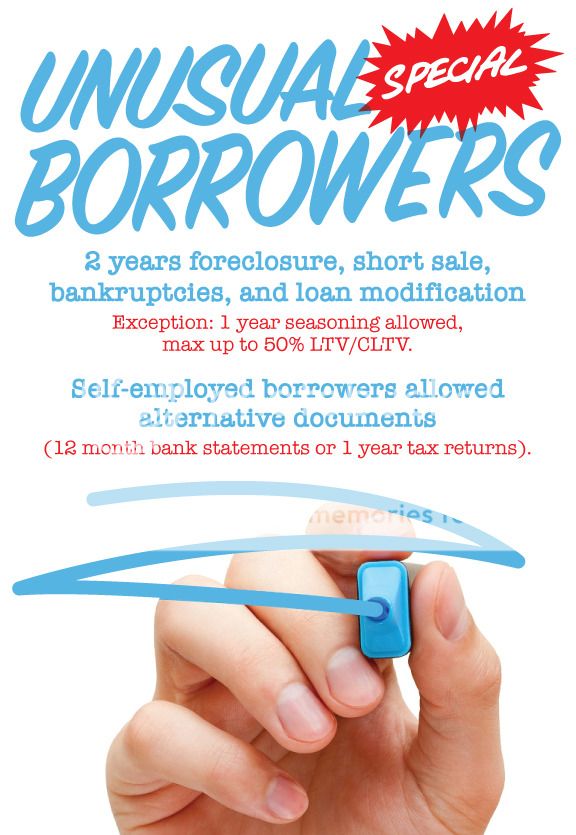 While my first book in the series “42 Encounters in San Francisco” is being printed, I needed more images for the next one, “42 Encounters in San Francisco with Couples”. A friend of mine told me about an upcoming Chinese Parade in Downtown, San Francisco. I usually do not purposefully go to events, in order to photograph. Nevertheless, I took the Muni underground over the weekend, with the intention to photograph the preparations for the parade. When I reached Powell Street, even before getting to the street level, I could hear people shouting, “Justice for All!” There was a huge demonstration of Chinese-Americans carrying signs that read, “Accident Not Crime” and “Justice for Peter Liang”. Online, I found out that the demonstrations took place in more than 30 cities in support of former NYPD police officer, Peter Liang, who was convicted of manslaughter in the 2014 shooting death of Akai Gurley, in a housing project stairwell. The 28 year-old Liang, who could be sentenced for 5 to 15 years, testified that the shooting was an accident.
While my first book in the series “42 Encounters in San Francisco” is being printed, I needed more images for the next one, “42 Encounters in San Francisco with Couples”. A friend of mine told me about an upcoming Chinese Parade in Downtown, San Francisco. I usually do not purposefully go to events, in order to photograph. Nevertheless, I took the Muni underground over the weekend, with the intention to photograph the preparations for the parade. When I reached Powell Street, even before getting to the street level, I could hear people shouting, “Justice for All!” There was a huge demonstration of Chinese-Americans carrying signs that read, “Accident Not Crime” and “Justice for Peter Liang”. Online, I found out that the demonstrations took place in more than 30 cities in support of former NYPD police officer, Peter Liang, who was convicted of manslaughter in the 2014 shooting death of Akai Gurley, in a housing project stairwell. The 28 year-old Liang, who could be sentenced for 5 to 15 years, testified that the shooting was an accident.
Many of the demonstrators are probably descendants of the Chinese immigrants, who came to San Francisco during the Gold Rush, which started in 1849. After the discovery of gold at Sutter’s Mill thousands of laborers came from China to work in the gold mines. At the beginning everyone was happy, but soon white laborers felt threatened by the hard working and cheaper Chinese. As a result of the protests and demonstrations, the Chinese had to leave the gold mines and settled in the area of San Francisco, which is now known as Chinatown where about 70,000 (about half of the total Chinese-American population) is still residing. In the early days, the area was known for the opium dens and exotic women.
Over the years that followed, many laws were passed in San Francisco restricting Chinese immigration, which eventually led to the United States Federal Law, “The Chinese Exclusion Act” of 1882, the most significant restriction of free immigration in U.S. history. Only in 1943, the Chinese immigrants residing in the U.S. were given permission to become U.S. Citizens.
Chinese-Americans live all over San Francisco, but many still live in Chinatown in small apartments, without living rooms. For many of them Portsmouth Square has become a meeting place where members of the local community can get together to play cards or other games or just to relax.
The Chinese New Year’s Parade began here in 1860, and this year, it had more than 20 floats with 2,500 marches and an estimated 750,000 guests, who came from all over the world. No wonder why some families started waiting for the parade to start, along Post Street as early as 2pm. You can read more about it in the San Francisco Chronicle article, “Crowd Has Barrel of Fun at Chinese New Year Parade”. As part of the celebration, Grant Street was closed with vendors set up along the narrow street and a huge crowd trying to push through it. It seemed that many visitors as well as locals had a lot of fun, and enjoyed the great weather.









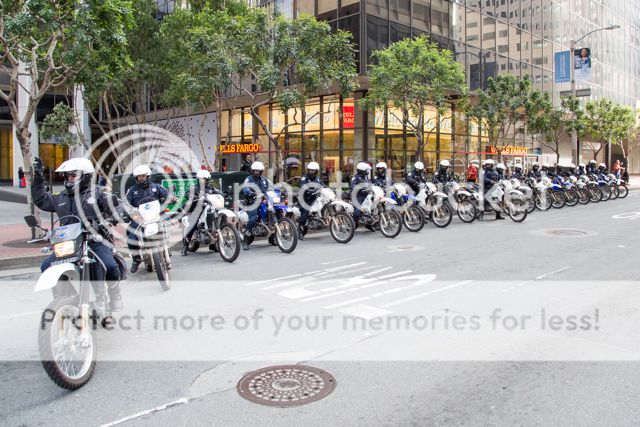
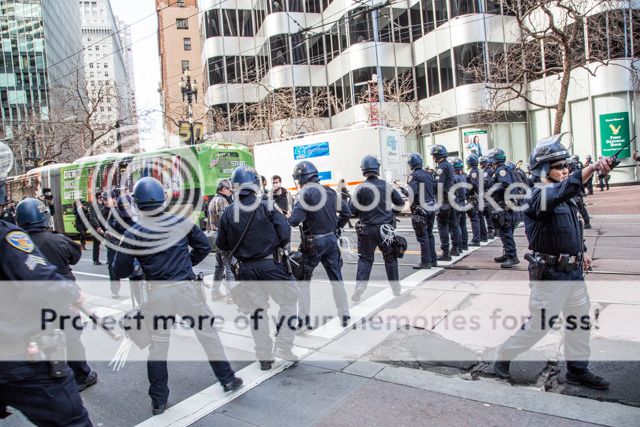
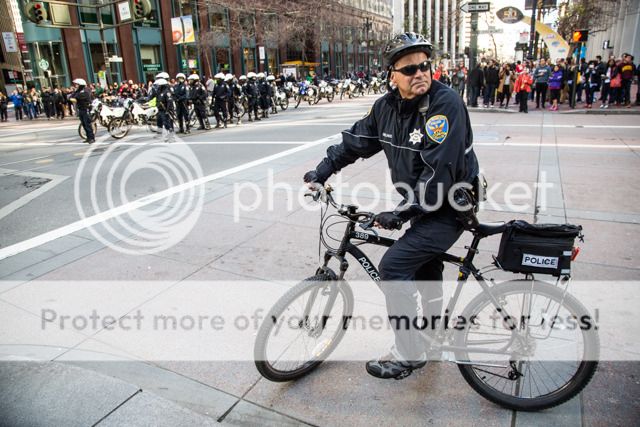


 I never liked to go to demonstrations, especially when they had a political connotation. Perhaps my aversion was a result of the demonstrations we had to attend while living in Riga, Latvia, which at that time was part of the Soviet Union. There are no such demonstrations in the United States, but we have our share of people’s demonstrations to support different causes. I encountered one, an anti-abortion rally, a few weeks ago, and wrote about it last week. A week before, I was at the Embarcadero to witness the preparation for the celebration of this monumental event. The security was very tight with the representatives of different branches of government enforcement agencies. I decided to leave the crowd to go back to Market Street. A few blocks away, I encountered a big group of policemen. Some were on motorcycles, with their engines roaring, some were ready for “action”. Two more groups of the policemen waited, with their batons in their hands preparing for the invisible confrontation, on both sides of the street. And then I saw the reason for this tension: a demonstration protesting the December 2nd police killing of African-American convicted felon Mario Woods after he slashed someone with his knife. In the “American Free Press” online, I found that “Over the past 35 years in America, an estimated 324,000 blacks have been killed at the hands of fellow blacks.” There is a lot of effort spent on protecting human lives.
I never liked to go to demonstrations, especially when they had a political connotation. Perhaps my aversion was a result of the demonstrations we had to attend while living in Riga, Latvia, which at that time was part of the Soviet Union. There are no such demonstrations in the United States, but we have our share of people’s demonstrations to support different causes. I encountered one, an anti-abortion rally, a few weeks ago, and wrote about it last week. A week before, I was at the Embarcadero to witness the preparation for the celebration of this monumental event. The security was very tight with the representatives of different branches of government enforcement agencies. I decided to leave the crowd to go back to Market Street. A few blocks away, I encountered a big group of policemen. Some were on motorcycles, with their engines roaring, some were ready for “action”. Two more groups of the policemen waited, with their batons in their hands preparing for the invisible confrontation, on both sides of the street. And then I saw the reason for this tension: a demonstration protesting the December 2nd police killing of African-American convicted felon Mario Woods after he slashed someone with his knife. In the “American Free Press” online, I found that “Over the past 35 years in America, an estimated 324,000 blacks have been killed at the hands of fellow blacks.” There is a lot of effort spent on protecting human lives.

 P.S. I could choose only four images to share with you. I hope that they convey the glimpse of my experience and encounters.Enjoy and Share.
P.S. I could choose only four images to share with you. I hope that they convey the glimpse of my experience and encounters.Enjoy and Share.


